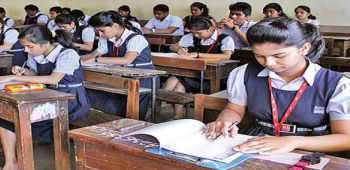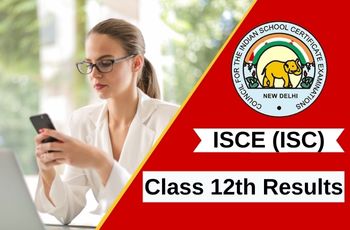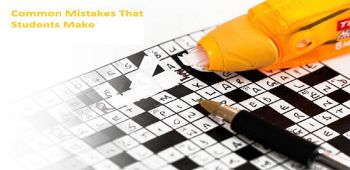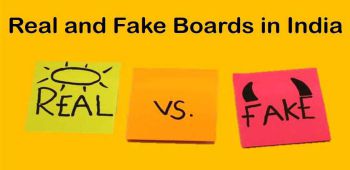The new and updated curriculum makes sure that the syllabus is not heavy and at the same time is comparable to the international level of education. The knowledge related to this subject has undergone humungous changes in the past one decade. Many new areas like natural resources, synthetic materials, bio -molecules, industrial chemistry are coming in a big way and deserve to be an integral part of chemistry syllabus at senior secondary stage. At the international level, new formulations and nomenclature of elements and compounds, symbols and units of physical quantities floated by scientific bodies like IUPAC and CGPM are of immense importance and need to be incorporated in the updated syllabus which is taken care of in the revised syllabus. Also greater emphasis has been laid on use of new nomenclature, symbols and formulations, teaching of fundamental concepts, application of concepts in chemistry to industry/ technology, logical sequencing of units, removal of obsolete content and repetition, etc.
Practicals: Evaluation Scheme and Syllabus (Total Periods 60)
|
Volumetric Analysis |
08 |
|
Salt Analysis |
08 |
|
Content Based Experiment |
06 |
|
Project Work |
04 |
|
Class record and Viva |
04 |
|
Total Marks |
30 |
Practical Syllabus
Micro-chemical methods are available for several of the practical experiments. Wherever possible, such techniques should be used.
- Surface chemistry
(a) Preparation of one lyophilic and one lyophobic sol
Lyophilic sol - starch, egg albumin and gum
Lyophobic sol- aluminium hydroxide, ferric hydroxide, arsenous sulphide.
(b) Dialysis of sol-prepared in (a) above.
(c) Study of the role of emulsifying agents in stabilizing the emulsion of different oils.
- Chemical Kinetics
(a) Effect of concentration and temperature on the rate of reaction between Sodium Thiosulphate and Hydrochloric acid.
(b) Study of reaction rates of any one of the following:
(i) Reaction of Iodide ion with Hydrogen Peroxide at room temperature using different concentration of Iodide ions.
(ii) Reaction between Potassium lodate, (KIO3,) and Sodium Sulphite: (Na2SO3,) using starch solution as indicator (clock reaction).
- Thermochemistry
Any one of the following experiments
- i) Enthalpy of dissolution of Copper Sulphate or Potassium Nitrate.
- ii) Enthalpy of neutralization of strong acid (HCl) and strong base (NaOH).
iii) Determination of enthalpy change during interaction (Hydrogen bond formation) between Acetone and Chloroform.
- Electrochemistry
Variation of cell potential in Zn/Zn2+ || Cu2+/Cu with change in concentration of electrolytes (CuSO4 or ZnSO4) at room temperature.
- Chromatography
- i) Separation of pigments from extracts of leaves and flowers by paper chromatography and determination of Rf values.
- ii) Separation of constituents present in an inorganic mixture containing two cations only (constituents having large difference in Rf values to be provided).
- Preparation of Inorganic Compounds
- i) Preparation of double salt of Ferrous Ammonium Sulphate or Potash Alum.
- ii) Preparation of Potassium Ferric Oxalate.
- Preparation of Organic Compounds
Preparation of any one of the following compounds
- i) Acetanilide
- ii) Di -benzal Acetone
iii) p-Nitroacetanilide
- iv) Aniline yellow or 2 - Naphthol Aniline dye.
- Tests for the functional groups present in organic compounds:
Unsaturation, alcoholic, phenolic, aldehydic, ketonic, carboxylic and amino (Primary) groups.
- Characteristic tests of carbohydrates, fats and proteins in pure samples and their detection in given food stuffs.
- Determination of concentration? Molarity of KMnO4solution by titrating it against a standard solution of:
- i) Oxalic acid,
- ii) Ferrous Ammonium Sulphate
(Students will be required to prepare standard solutions by weighing themselves).
- Qualitative analysis
Determination of one cation and one anion in a given salt.
Cation ‒ Pb2+, Cu2+ As3+, Al3+, Fe3+, Mn2+ , Zn2+, Cu2+, Co2+, Ni2+, Ca2+, Sr2+, Ba2+, Mg2+, NH4+
Anions ‒ CO3 2‒, S2‒, SO32‒, SO42‒, NO2‒, NO3‒, Cl‒, Br‒, I‒, PO43‒, C2O42‒, CH3COO‒
(Note: Insoluble salts excluded)
Project Work
Scientific investigations involving laboratory testing and collecting information from other sources.
A few suggested Projects.
- Study of the presence of oxalate ions in guava fruit at different stages of ripening.
- Study of quantity of casein present in different samples of milk.
- Preparation of soyabean milk and its comparison with the natural milk with respect to curd formation, effect of temperature, etc.
- Study of the effect of Potassium Bisulphate as food preservative under various conditions (temperature, concentration, time, etc.)
- Study of digestion of starch by salivary amylase and effect of pH and temperature on it.
- Comparative study of the rate of fermentation of following materials: wheat flour, gram flour, potato juice, carrot juice, etc.
- Extraction of essential oils present in Saunf (aniseed), Ajwain (carum), Illaichi (cardamom).
- Study of common food adulterants in fat, oil, butter, sugar, turmeric power, chilli powder and pepper.
Note: Any other investigatory project, which involves about 10 periods of work, can be chosen with the approval of the teacher.
TIPS AND TRICKS:
Firstly, understand the Practical Exam questions.
- Ionic Analysis
- Titration
- Emulsions
Go through each and every salt analysis experiment. Learn all the exact experiments involved and observations including the groups involved by heart. Learn separately the test of each and every anion and cation.
Learn properly and sequentially titration experiments. DO NOT learn the readings as the molarity of the solution offered during practical exam may vary. Keep note of the theory involved and also the concepts in it as they may be asked during practical exam.
Mug up the few processes of preparation of emulsions and how you have to make the observations.




















Comments